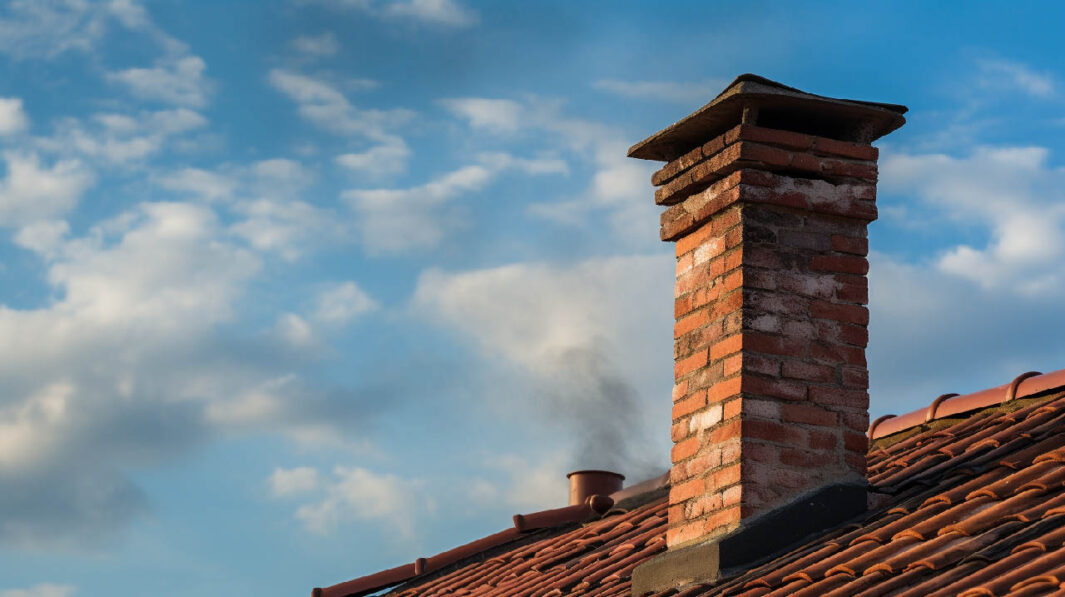Chimneys, while often overlooked, play a crucial role in maintaining the structural integrity and safety of our homes. A leaking chimney can lead to a myriad of problems, from minor inconveniences to major structural damages. At Home Evolution, we understand the importance of a well-maintained chimney and are here to guide you through the process of identifying and addressing chimney leaks.
Common Chimney Failure Points
Understanding where chimneys are most likely to fail can help homeowners take preventative measures. The most frequent areas of concern include:
- Base Flashing: This is where the roofing and chimney converge. It’s essential to ensure that the step flashing installed under the shingles and over the ice and water barrier is in good condition.
- Counter Flashing: This is an additional layer of protection against potential leaks.
- Brick and Stone Veneer: Over time, the exterior insulation and veneer can deteriorate, leading to potential weak points.
- Chimney Cap: This is crucial for preventing external elements, especially water, from entering the chimney.
- Vent Stacks and Flues: Regular inspection of these components is vital to ensure they remain in optimal condition.
Signs Your Chimney Might Be Leaking
Detecting a chimney leak early can save homeowners from costly repairs in the future. Here are some signs to watch out for:
- Spalling: This occurs when the surface of the brick begins to flake away, resulting in a cracked or broken appearance. If you notice pieces of brick or stone on your roof, it’s a clear sign of spalling caused by water or moisture damage.
- Efflorescence: This is characterized by a white residue on chimney bricks, resulting from salt deposits. It can be caused by rain or condensation forming within the chimney.
Why Chimneys Leak
Several factors can contribute to a leaking chimney:
- Faulty Flashing: The flashing, typically made of aluminum and sealed with tar, can develop cracks or tears, allowing water to seep in during rainstorms.
- Deteriorating Mortar: Over time, the mortar holding the bricks or stones together can deteriorate, leading to potential water ingress.
- Absence of a Chimney Cap: A chimney cap prevents rain and external debris from entering the chimney. If your chimney lacks a cap or has a damaged one, it’s more susceptible to leaks.
- Cracked Chimney Crown: The crown, usually made of cement, can develop cracks, allowing water to penetrate the chimney.
Waterproofing: An Essential Step
Water is a formidable enemy of masonry chimneys. Bricks, being porous, can absorb water, leading to accelerated deterioration. To protect your chimney from potential water damage, it’s advisable to apply a waterproof sealer. However, remember that the effectiveness of the waterproof coating diminishes over time. Hence, for best results, consider reapplying the waterproofing every five years. If you’re in the Albany area, Home Evolution, a renowned roofing company in Albany NY, can assist with this.
Addressing Chimney Leaks
If you suspect a leak in your chimney, it’s essential to address it promptly. Here’s what you can do:
- Inspect the Flashing: Ensure that the flashing around the chimney is intact. If you notice any cracks or tears, it’s time for a repair.
- Check the Mortar: If the mortar shows signs of deterioration, consider getting it repaired or replaced.
- Install or Replace the Chimney Cap: A sturdy, rust-resistant chimney cap can prevent water ingress and other potential blockages.
- Examine the Chimney Crown: If the crown has cracks, get it sealed or replaced as necessary.
Conclusion
A well-maintained chimney not only enhances the aesthetic appeal of your home but also ensures its safety. Regular inspections and timely repairs can go a long way in preventing potential problems. If you’re looking for expert roofing contractors in Albany NY, Home Evolution is here to help. With our expertise and commitment to quality, we ensure that your chimney remains in top-notch condition, protecting your home from potential hazards.

